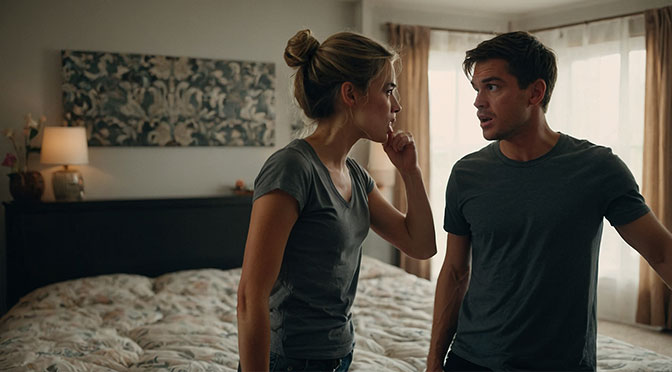We all know that feeling: a book that captivates us so completely we can’t put it down. What’s the secret behind this irresistible pull? Often, it’s a well-crafted conflict. Especially in erotic literature, conflict plays a decisive role – and simultaneously marks a fundamental difference from pornography.
The Heartbeat of Every Story: Conflict
Every compelling story contains obstacles to overcome. Obstacles that push our protagonists to their limits, help them grow, and make us, as readers, empathize with them. Without conflict, the spark that ignites the flame of tension is missing.
The same principle applies when writing erotic literature. The difference from pure pornography lies precisely here: while pornographic depictions often transition directly to the sexual act, erotic literature takes us on a journey full of highs and lows.
The Naked Truth About Pornography
In pornographic narratives, we frequently encounter a predictable pattern: two (or more) people meet, feel immediate sexual attraction, and end up in bed without notable obstacles. The “plot” is limited to a sequence of sexual activities. This can have its appeal but rarely offers emotional depth or the opportunity to identify with the characters.
Think of classic pornographic scenarios: the plumber who comes for repairs and within two minutes exchanges her tools for physical activities. Or the fitness trainer who shows his client very special “exercises.” These scenarios deliberately dispense with complex interpersonal dynamics – and thus with what truly captivates us as humans.
Erotic Literature: When Desire Meets Resistance
In successful erotic literature, however, the path to sexual climax is paved with obstacles. These obstacles can be diverse:
The protagonist in “Fifty Shades of Grey” struggles with her inexperience and the decision to engage with her partner’s unusual sexual preferences. In “Outlander,” centuries separate the lovers. In Jane Austen’s “Pride and Prejudice,” social conventions and personal prejudices stand between Elizabeth and Mr. Darcy.
These conflicts create tension and keep us on edge. Will she overcome her fear? Will they find each other despite all adversities? The resolution of this tension – when they finally come together – becomes all the more satisfying.
The Power of Unfulfilled Longing
Another fascinating aspect: in erotic literature, unfulfilled desire functions as a powerful driver of tension. We readers are placed in a state where we crave the fulfillment of desire just as much as the characters themselves.
Take Sally Rooney’s “Normal People”: protagonists Connell and Marianne circle each other for years, come together and separate again. Their complicated relationship, characterized by unspoken feelings and social differences, creates an erotic tension that goes far beyond explicit sex scenes.
Why Conflict-Rich Erotic Literature Touches Us
As women and men, as humans with our own complex emotional worlds, we recognize ourselves in the internal and external struggles of the protagonists. The character wrestling with themselves before surrendering to desire mirrors our own experiences with longing, insecurity, and the complicated dynamics of interpersonal relationships.
Erotic literature that skillfully weaves these conflicts speaks to us on a deeper level than pure pornography. It validates the complexity of our own sexual experiences and fantasies and gives them a narrative space.
Writing Erotica: Conflict as a Central Element
For aspiring authors of erotic literature, the conscious use of conflicts is therefore essential. Ask yourself: What stands between your protagonists? What inner demons must they conquer? What external circumstances make their union difficult?
The answers to these questions form the framework for a captivating erotic story. They give sexual encounters meaning beyond the physical act and transform them into experiences that change the characters.
Liberation Through Complexity
In a world that often simplifies or objectifies female sexuality, conflict-rich erotic literature offers a space for nuanced portrayals of female (and male) sexual experiences. It allows us to explore sexuality in all its complexity – with all its emotional, psychological, and social facets.
Pornography may offer immediate satisfaction. But erotic literature that centers on conflict gives us something more valuable: it validates our own complex relationship with desire, intimacy, and sexuality and reminds us that the journey can sometimes be just as fulfilling as the destination.
The next time you read or write an erotic story, pay attention to the conflicts. They are what transform a sequence of sexual acts into a captivating, touching, and ultimately satisfying story.

